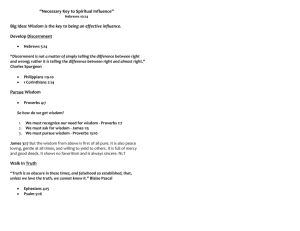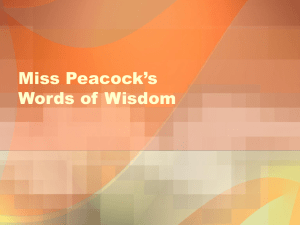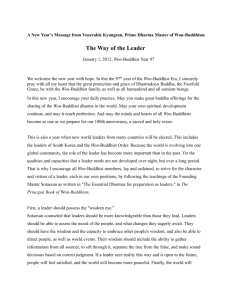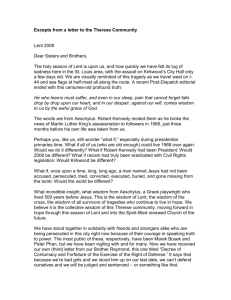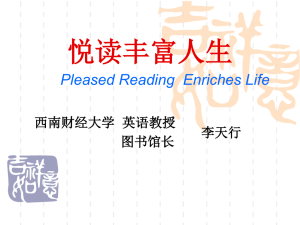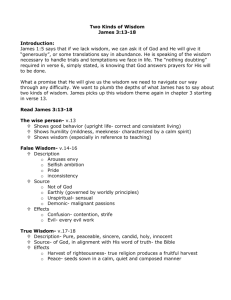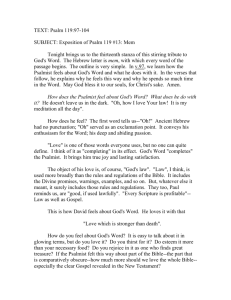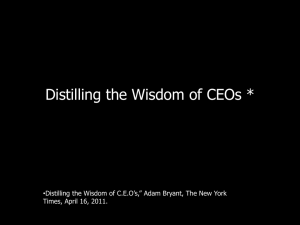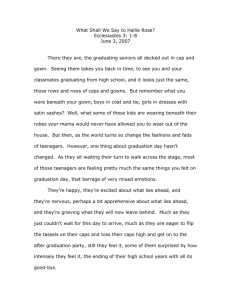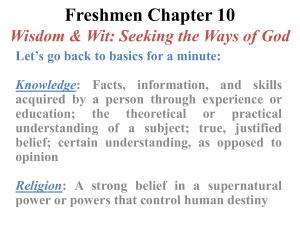Information and Analysis
advertisement
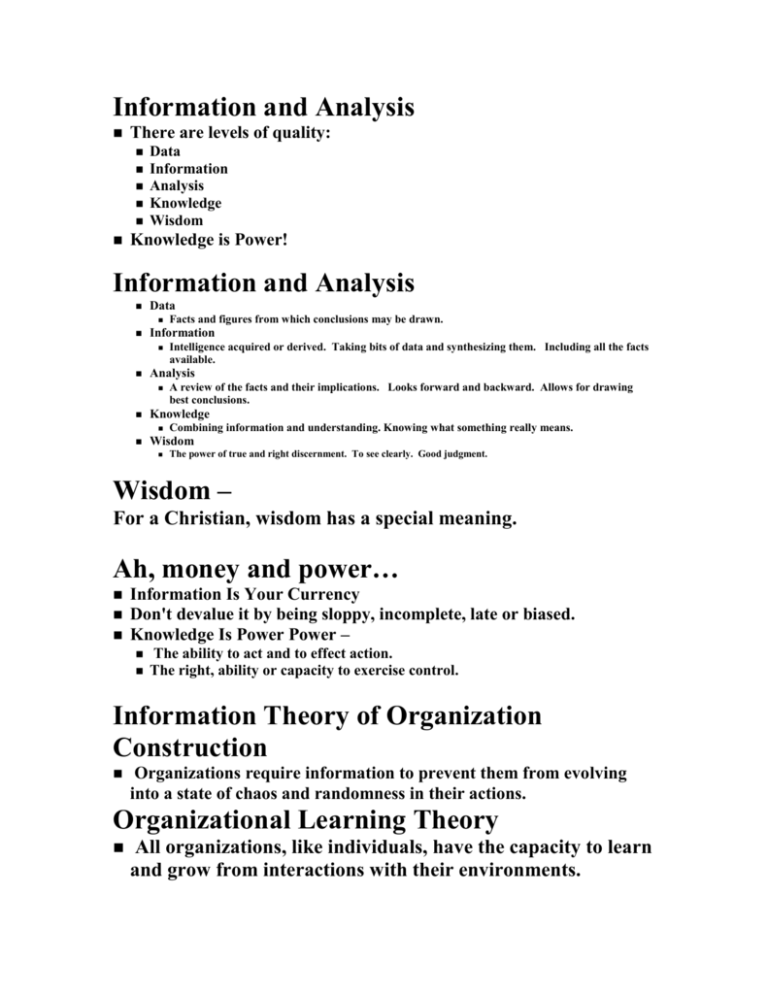
Information and Analysis There are levels of quality: Data Information Analysis Knowledge Wisdom Knowledge is Power! Information and Analysis Data Information Facts and figures from which conclusions may be drawn. Intelligence acquired or derived. Taking bits of data and synthesizing them. Including all the facts available. Analysis A review of the facts and their implications. Looks forward and backward. Allows for drawing best conclusions. Knowledge Wisdom Combining information and understanding. Knowing what something really means. The power of true and right discernment. To see clearly. Good judgment. Wisdom – For a Christian, wisdom has a special meaning. Ah, money and power… Information Is Your Currency Don't devalue it by being sloppy, incomplete, late or biased. Knowledge Is Power Power – The ability to act and to effect action. The right, ability or capacity to exercise control. Information Theory of Organization Construction Organizations require information to prevent them from evolving into a state of chaos and randomness in their actions. Organizational Learning Theory All organizations, like individuals, have the capacity to learn and grow from interactions with their environments. Enough Theory Let’s get practical… What Can Impede the Flow of Information? The exception principle Only exceptional situations are reported But who decides what is exceptional? Who wants to be the bearer of bad news? An innate reluctance to communicate bad news Obstacles to Communication 1) Lack of clarity 2) Lack of accuracy 3) Failure of the receiver to listen or read 4) Reluctance to accept the contents 5) Failure of the receiver to act appropriately 6) Distance between the sender and receiver - makes checking up and clarification difficult My Personal Favorite: Gobbledygook Misleading jargon, meaningless terms. Hiding behind technical language. Our exploratory research points to compatible management processing. At base level, this just comes down to facilitating monitored contingencies. The solution can only be knowledge-based transitional matrix approaches. The 6 C's - "Outside the Box" Ways to Get Information for Good Decision Making Computerized Clippings - news outlets on the web Channels - institutional methods - suggestion box, etc. Contact - direct contact at any level Channel surfing/Competition - let as many ideas as possible bubble up to compete Commissions - experts, constituents, administrators Constituents – the end users Constituents Complaints – Complaining customers may be bothersome, but they have value: They don't mind bringing bad news They are at the opposite end of the process from the executive They possess valuable information. Communicating a Decision Back "Down" Once It Has Been Made: Meetings Memo’s E-mail Personal contact Meetings Decide - Who will lead it? Who will attend? Notice requirements Large group/ small group With written material/ without With debate or discussion (When to NOT have debate? If you have already decided.) Train the trainers Staff meetings - regularly scheduled or informal gathering My Perfect-world Meeting Be organized Keep external complications in mind Have visuals or handouts Pay attention to non-verbal (and even verbal) feedback Be clear Be concise Memos – Written Communication Decide – Who will write it? Who will sign it? Who will receive it? (Confidentiality issues?) Brief, NOT a letter, may be in bullet format, may be kept as a reference Perfect-world Memo Be clear Be concise Include references Bear in mind that it may become public E-mail – a Timely Option Don't overuse it Too long and it gets filed for "later" May not be kept for reference Still subject to FOI and Sunshine rules Personal Contact Efficiency vs. Effectiveness Face to face allows Feedback A flow of information Immediate clarification A level of confidentiality Policy Analysis Analysis vs. Synthesis A rational approach which includes subjective information Suggested Analysis Outline Current situation Proposed changes (and source if relevant) Impact of proposed changes: Policy Fiscal Political Other alternatives or options Possible opposition Suggestions for improvements/amendments How Do You Get Information to Use in Your Analysis? Be ahead of assignments – plan and calendar E-mail Telephone Show up! Be tenacious Take good notes Keep good files Cultivate contacts Learn to think critically (Keep asking "why?") Information Technology Increases ability to get information on how other programs are run Allows for direct communication to the entire agency Can be used to gather data that when properly analyzed can yield good information (ex. Workload, demographics, etc.) PUBLIC Information Resource Management Will computers free us? What is “the computer impact”? Thursday: Be familiar with the facts of the Challenger Case - handout. Be prepared to identify examples of obstacles to communicate within the case, and to discuss the effects that privatization may have had on the outcome of the case. Be familiar with the facts of the Columbia Disaster - page 111. Be prepared to identify examples of obstacles to communicate within the case, and to discuss what changes should have been made (or kept) to avert this second NASA tragedy . Good News! I’ve decided against the Public Information Resource Management Handout!
